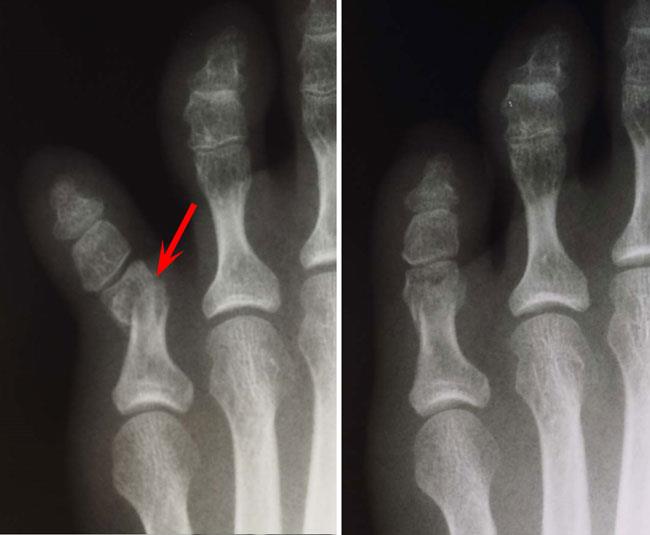Fractures of the toes and forefoot are quite common. Fractures can result from a direct blow to the foot — such as accidentally kicking something hard or dropping a heavy object on your toes. They can also result from the overuse and repetitive stress that comes with participating in high-impact sports like running, football, and basketball
Although fracturing a bone in your toe or forefoot can be quite painful, it rarely requires surgery. In most cases, a fracture will heal with rest and a change in activities

Toe and forefoot fractures often result from trauma or direct injury to the bone. Fractures can also develop after repetitive activity, rather than a single injury. This is called a “stress fracture.”
Fractures may either be :
Symptoms
The most common symptoms of a fracture are pain and swelling. Other symptoms may include :
During the examination, following may found,
Imaging Studies
X-rays are basic and initial tool to diagnose toe fracture.
Magnetic Resonance Imaging (MRI) scans in case of suspicious of stress fracture.
Treatment
Treatment for a toe or forefoot fracture depends on :
Most broken toes can be treated without surgery. For several days, it may be painful to bear weight on your injured toe. As pain subsides, one can begin to bear weight as you are comfortable. During this time, it may be helpful to wear a wider than normal shoe.
Taping your broken toe to an adjacent toe can also sometimes help relieve pain.
If the bone is out of place and your toe appears deformed, it may be necessary for doctor to manipulate, or reduce, the fracture. This procedure is most often done in the doctor’s office. You will be given a local anesthetic to numb your foot, and your doctor will then manipulate the fracture back into place to straighten your toe.
If the bone is out of place and your toe appears deformed, it may be necessary for your doctor to manipulate, or reduce, the fracture. This procedure is most often done in the doctor’s office. You will be given a local anesthetic to numb your foot, and your doctor will then manipulate the fracture back into place to straighten your toe.


